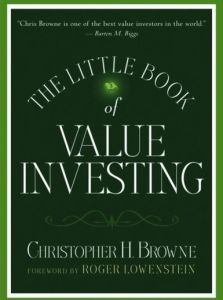Join getAbstract to access the summary!

Join getAbstract to access the summary!
Christopher H. Browne
The Little Book of Value Investing
Wiley, 2006
What's inside?
Value investing is an indispensable method, so this may be an indispensable, though compact, book.
Recommendation
This short book is surely among the most concise, informative investment guides ever written. Christopher H. Browne manages to make stock market investing as simple and straightforward as shopping for groceries. He sketches quickly, but in adequate detail, the main principles of value investing, offers guidance on how to use such basic information as P/E ratios, points the way to free online stock-screening services and, yet, makes no big promises about market success. His message is that value investors who do their homework patiently and thoroughly may expect good returns eventually. Instead of aggressive trading, he emphasizes the virtue of not taking action. getAbstract recommends this succinct tutorial to every investor.
Summary
About the Author
Christopher H. Browne is a managing director of an investments firm and a member of its management committee. He established the Browne Center for International Politics and the Browne Distinguished Professorships at the University of Pennsylvania.

















Comment on this summary